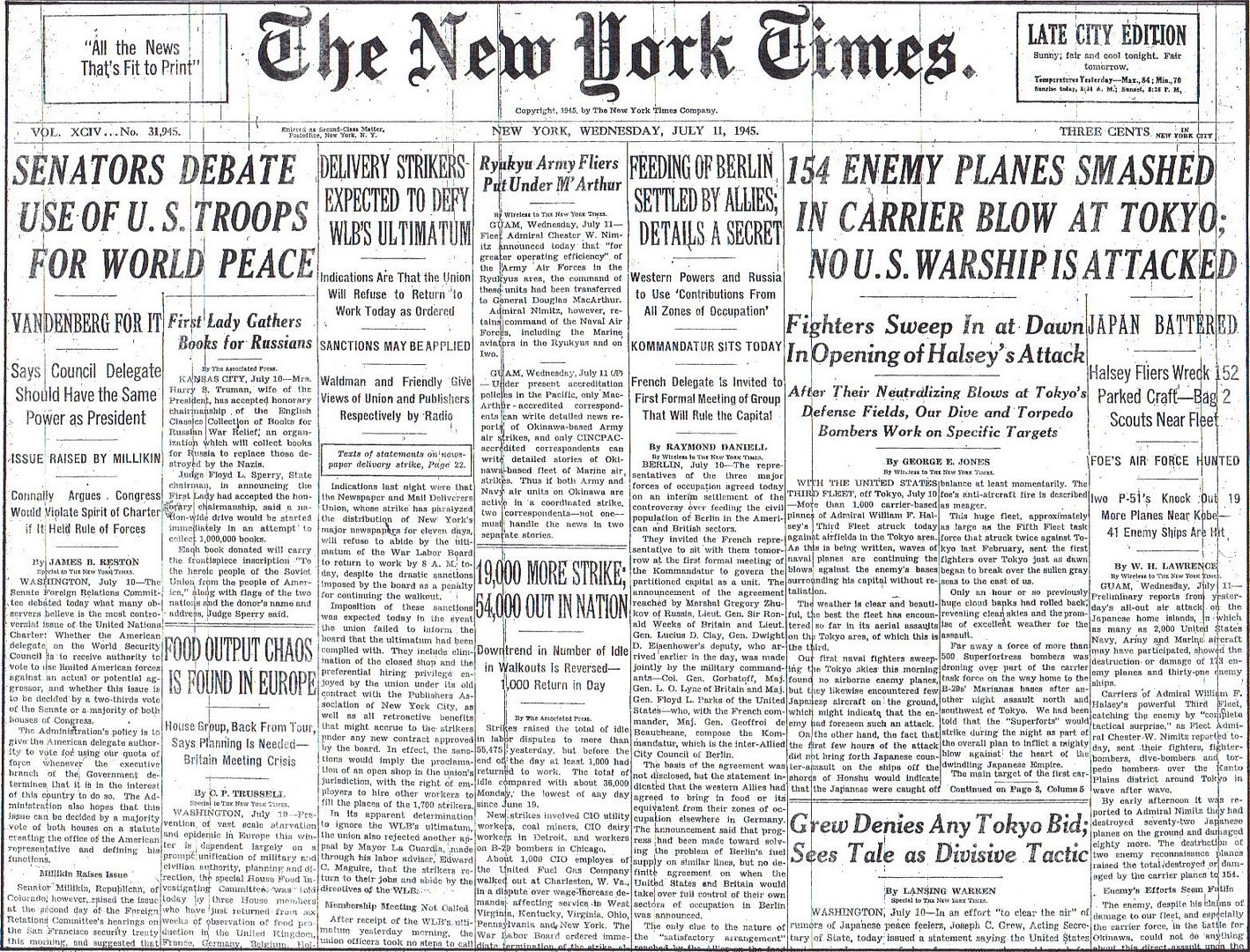
Posted on 07/11/2015 5:12:08 AM PDT by Homer_J_Simpson


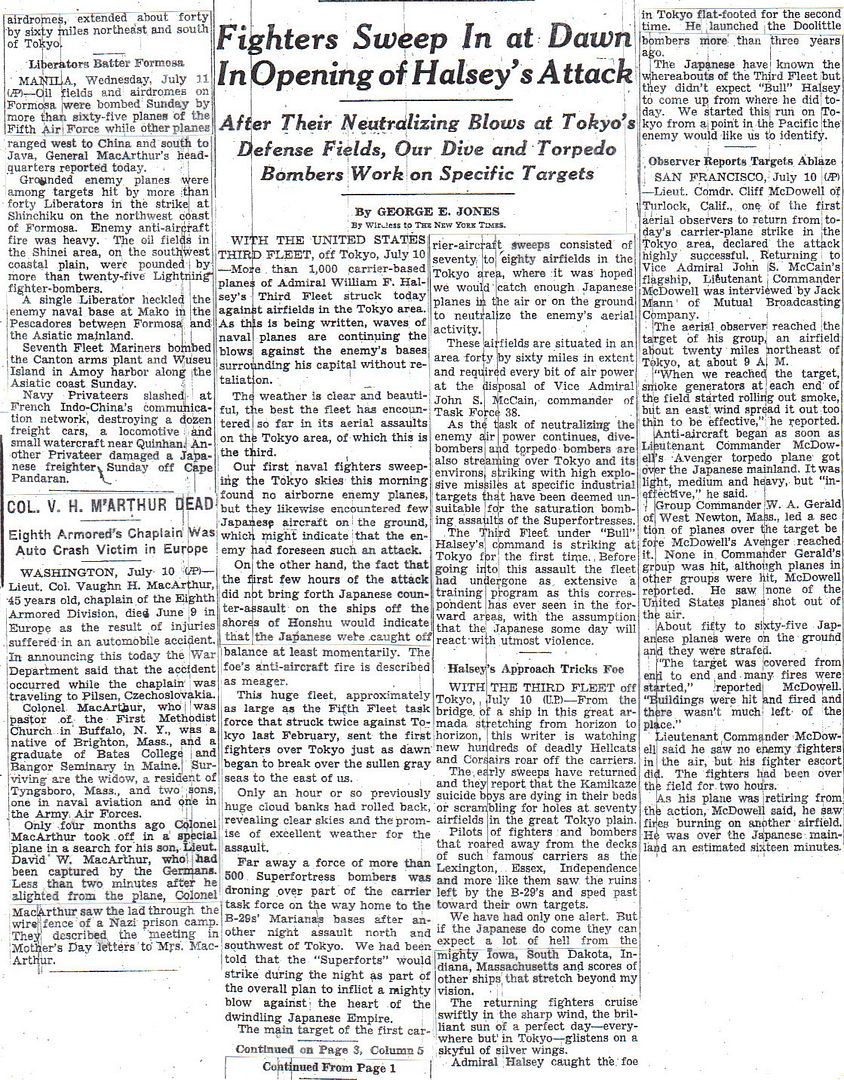
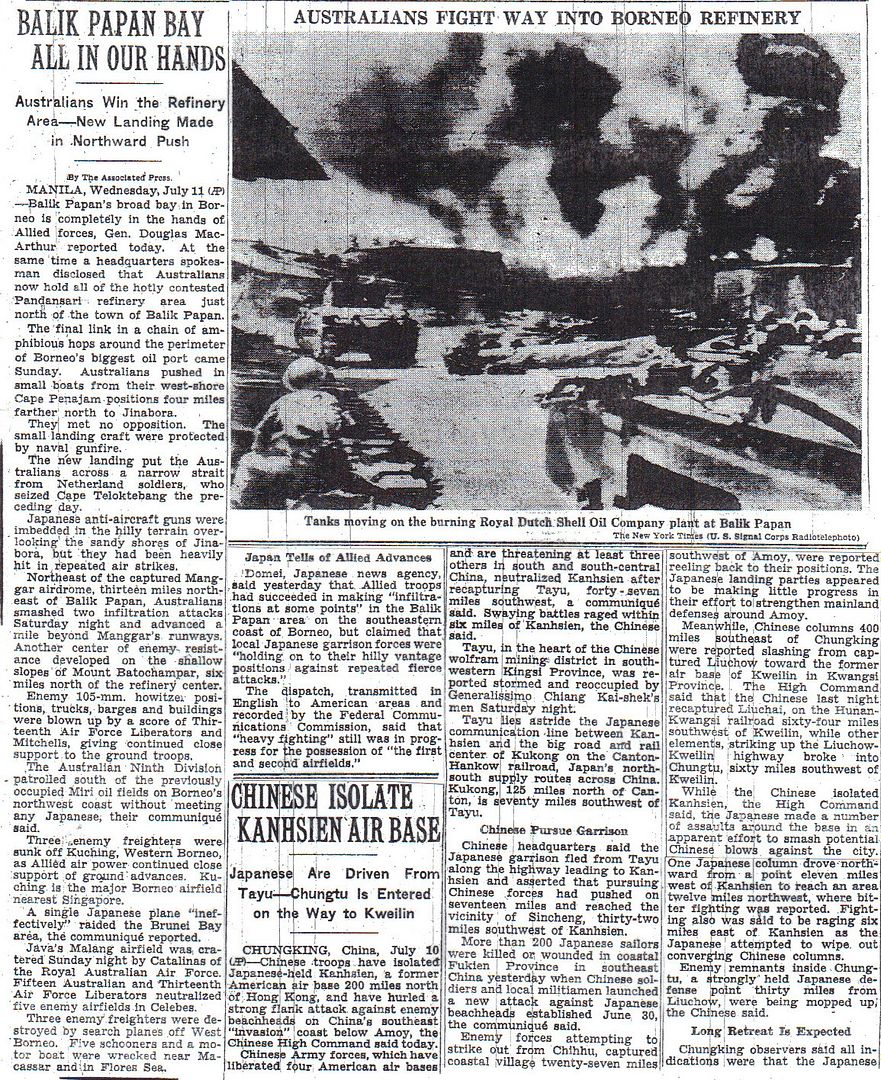

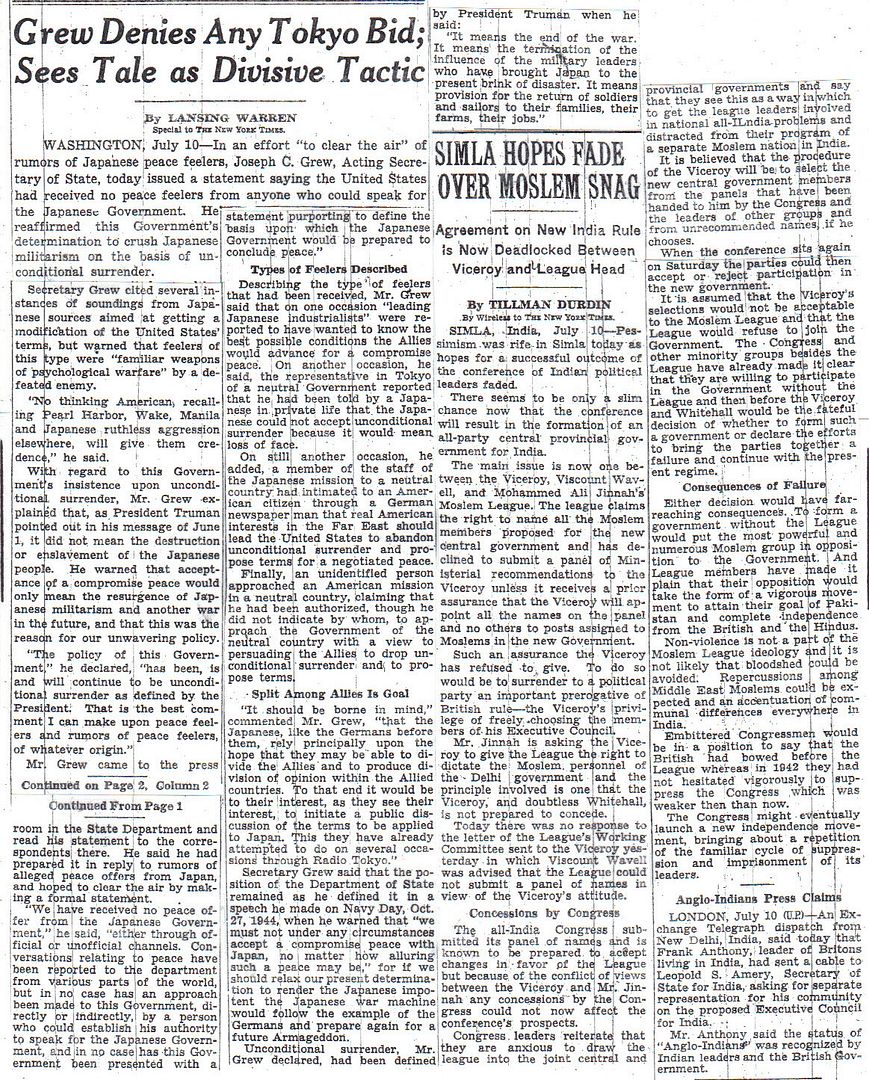
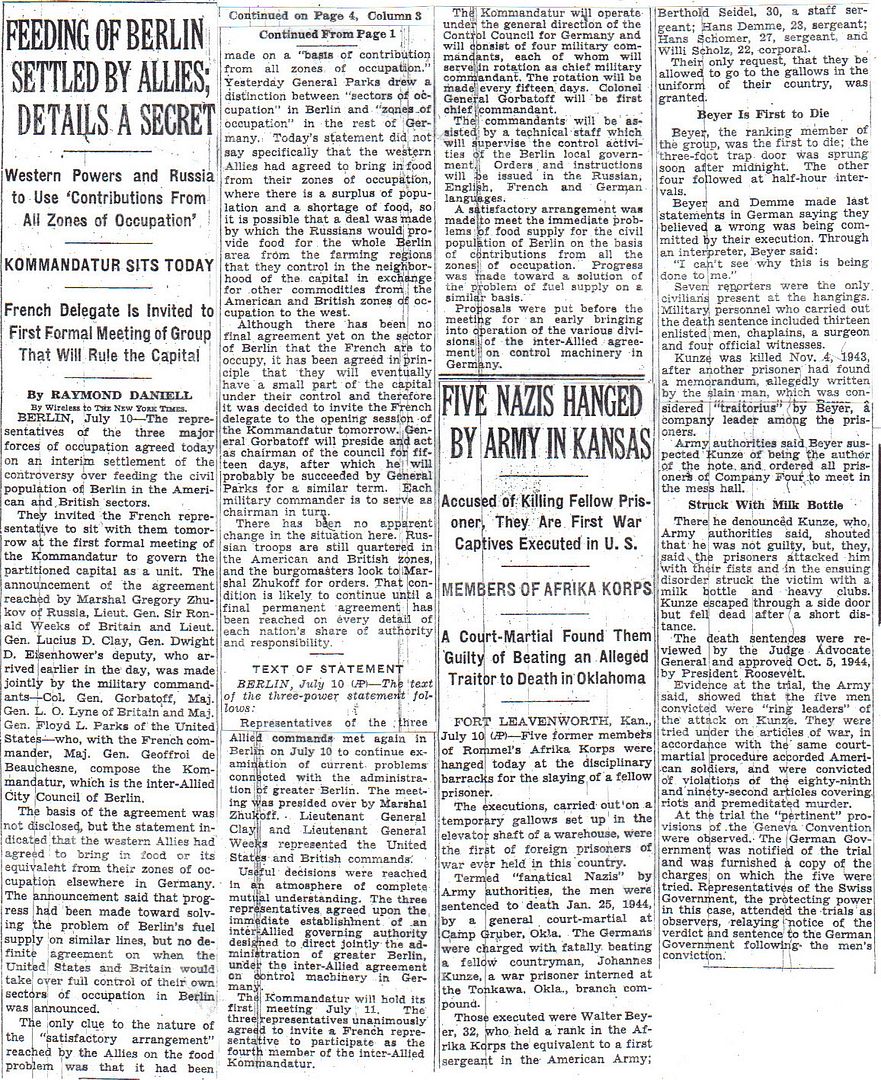
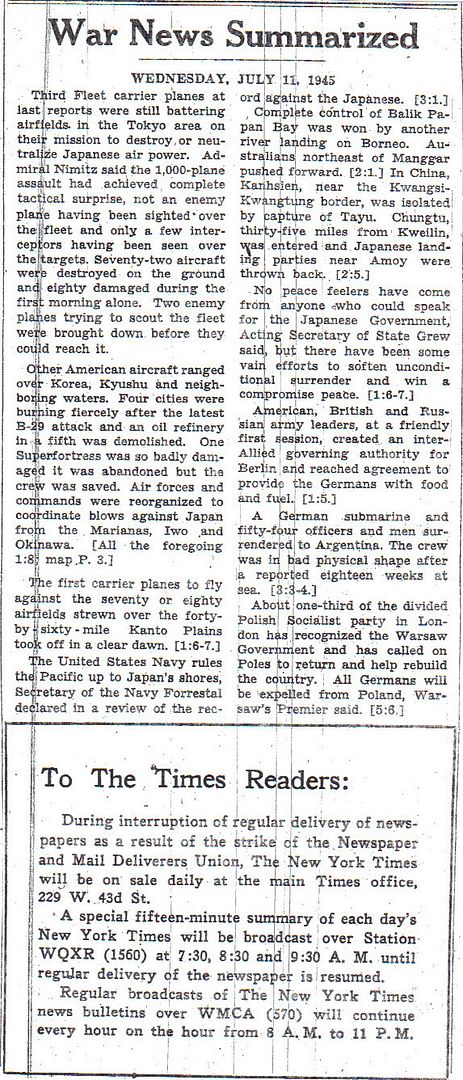

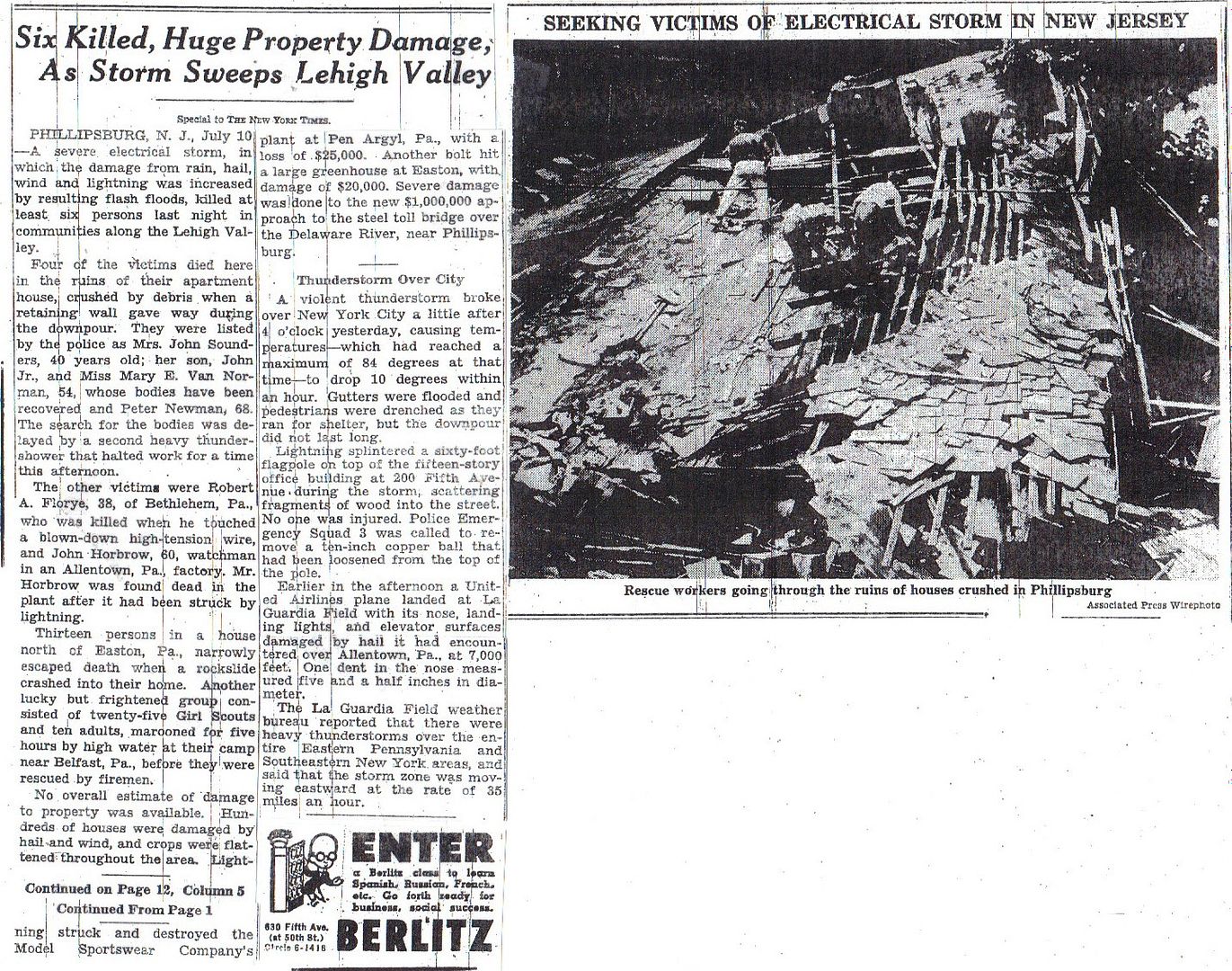
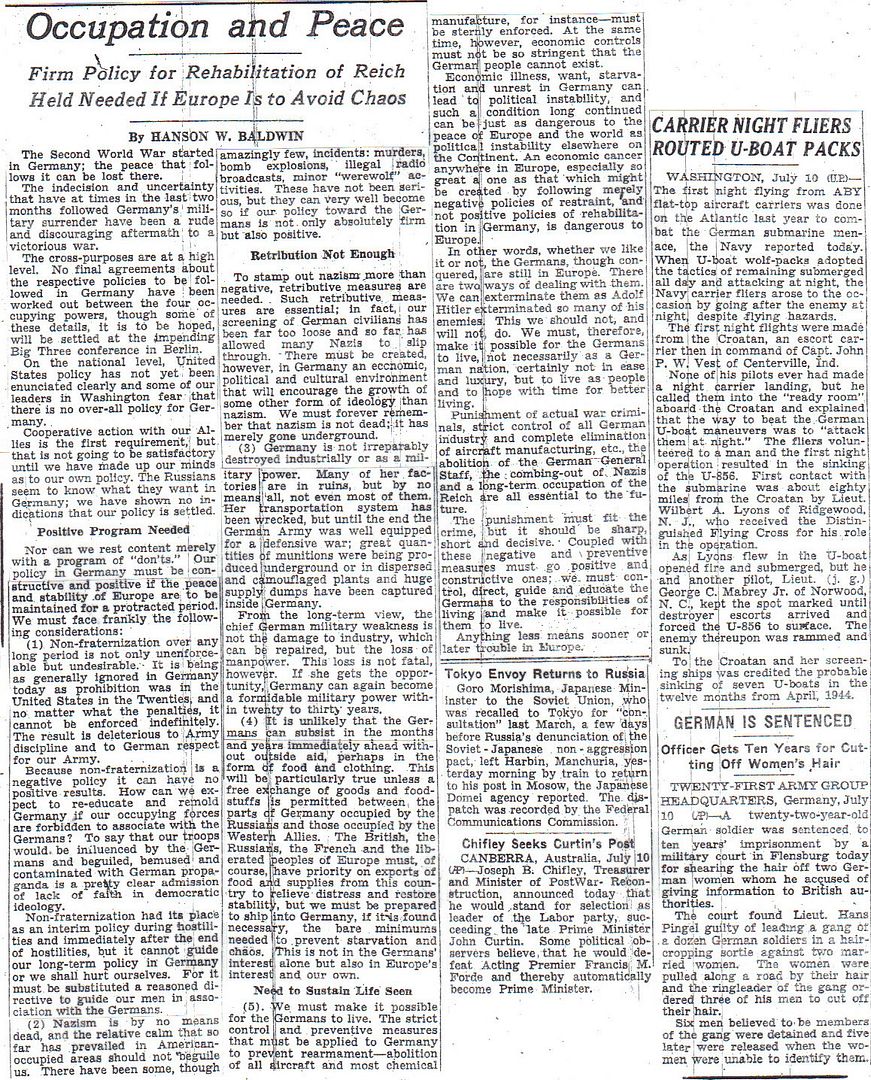
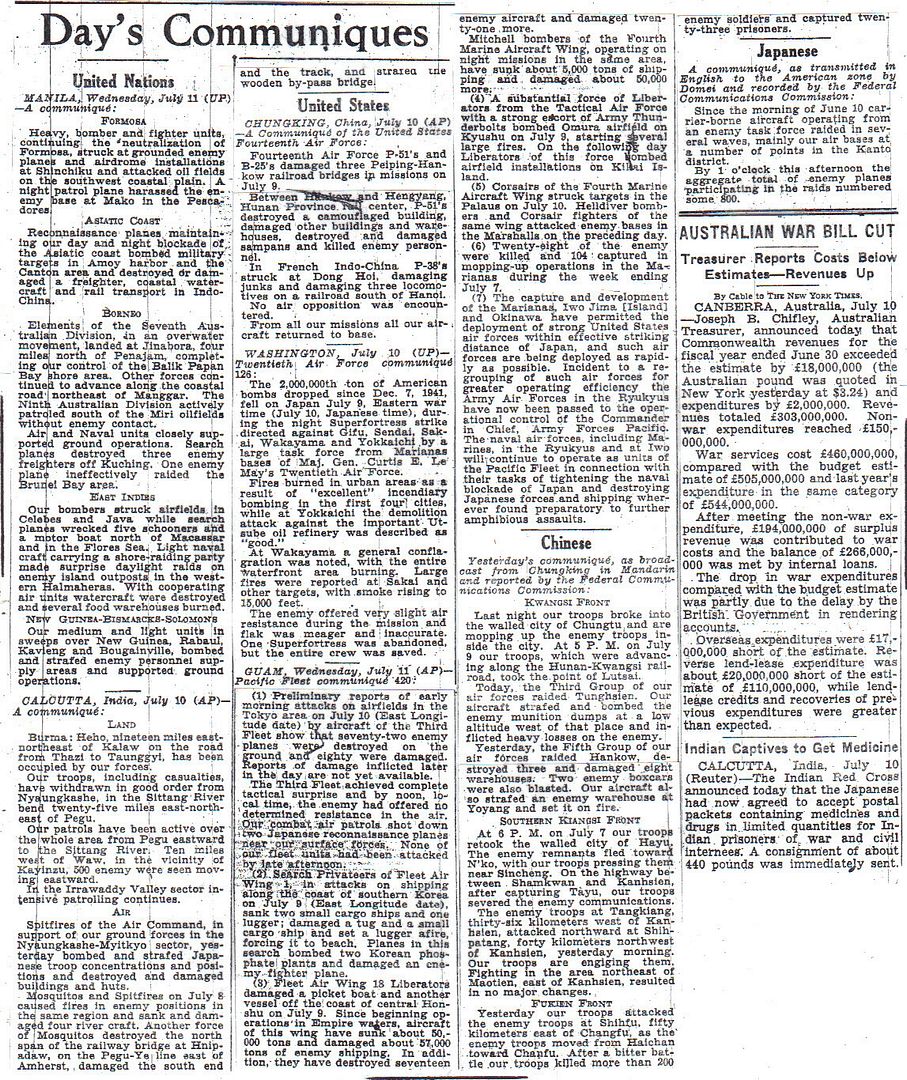
http://www.etherit.co.uk/month/6/11.htm
July 11th, 1945 (WEDNESDAY)
GERMANY: The first meeting of the Inter-Allied Council for Berlin begins to day. The Russians hand over the western half of the city to British and US forces.
INDIAN OCEAN: British carrier aircraft bomb Japanese airfields on Sumatra.
JAPAN: In the Kurile Islands, five Eleventh Air Force B-24s radar-bomb Kataoka Air Base on Shimushu Island and 4 B-25s fly a shipping sweep and bomb a Otomae Wan fishery, scoring hits among the buildings.
In Japan during the night of 11/12 July:
- 2 Seventh Air Force B-24s from Okinawa attack Byu and Miyazaki Airfields on Kyushu, and
- XXI Bomber Command B-29s fly Mission 262: 25 B-29s mine Shimonoseki Strait and waters at Miyazu, Maizuru, Obama Island and, in the first B-29 operation to Korea, 2 mine Pusan and Najin.
CANADA: William Mackenzie King wins the general election.
Corvettes HMCS Kitchener, Port Arthur and Merrittonia paid off Sorel, Province of Quebec.
Corvette HMCS Drumheller and HMC ML 071 paid off Sydney, Nova Scotia.
U.S.A.: Admiral H. Kent Hewitt concludes his “investigation of facts pertinent to the Japanese attack on Pearl Harbor.” The report, consisting of 1,342 pages, is forwarded to the Secretary of the Navy. Admiral Kimmel is still faulted for the attack.
Hugh Mulcahy of the Philadelphia (Pennsylvania) “Phillies” returns to baseball. He was the first major league baseball player to be drafted in the US on march 8, 1941. He was known as the “Losing Pitcher”, with a career total of 45 wins, 89 losses, and an ERA of 4.49. He established the National league record for loses in 1940, but was on the 1940 National League All Star squad. (Michael Ballard)
Love the date line. After 24 years in uniform and 15 more as a civilian working with the AF, I got so used to GMT/ZULU, etc., that it was neat to see them use the paren and “Guam date) note to be sure that the date was taken accurately.
I didn’t realize that there were two generations of Admiral John S. McCains serving in WWII. The senior John S. McCain lived until just after the surrender of Japan.
I'm guessing that nearly everyone here knows about the Shimonoseki Strait, between Honshu and Kyushu; mining there would force ships going from Korea to the industrial underbelly of Japan to have to sail around Kyushu, where they would be prey for fighter-bombers from Okinawa, and/or submarines in the Japan Sea.
But Miyazu, Maizuru, and Obama--which is not an "island"--are three port cities lined up on the shores of Wakasa Bay (若挟湾), which would be a way to enter Japan from Korea through the back door, as it were: from Maizuru you could get to the Kansai area of Kyoto/Osaka/Kobe by train or road.
By mining both Shimonoseki and the Wakasa Bay area, Nimitz is making it difficult to get food supplies from Manchukuo and Korea to Japan, and perhaps more importantly, making it difficult to get Japanese military and civilian personnel transferred from Jehol, Manchukuo, and Korea to the home islands as reinforcements to fight the pending invasion.
Along the shores of Wakasa Bay there are a lot of "hama"s ("bama" is a Japanese variant), or harbors: Mihama ("beautiful harbor"), Takahama ("high harbor"), and of course Obama ("little harbor"). The present president visited his coincidental namesake back in 2010, IIRC.
One more thing: Miyazu is the sister city of Delray Beach, FL. The reason for this is that in the early 1900s a group from Miyazu emigrated to south Florida in the hope of turning the subtropical swamp into pineapple farms, to provide pineapples to the east coast the way Hawaii was providing pineapples to the west coast. It didn't work out and most of the group eventually went elsewhere (or back to Japan), but one holdout, Sukeji "George" Morikami, held on to his thousands of acres of Delray Beach land until his death in the early 1970s. (Japanese on the east coast were generally not placed in internment camps.) When he died, he deeded the land to the city of Delray Beach, on the condition that the city build a museum to Japanese culture. The Morikami Museum has grown over the last 40 years to become one of the best-known museums of Japanese culture, with a collection of Japanese gardens, a large permanent collection plus travelling exhibits, a theater for presentations and performances, and a complete tea ceremony center built in the museum.
To those who thanked me yesterday, I am both honored and humbled. I am a latecover to this daily list, and I feared I was “horning in” on a group that has been together for quite some time. Thank you.
Glad to have your insights. Wish you’d been here earlier.
It reminds me of the "negotiations" at the end of this encounter:
"All right, we'll call it a draw."
“It’s just a flesh wound.”
If the Japanese leadership had been connected to reality, they never would have invaded China, let alone attacked America.
They really didn’t do a good job of thinking things through, did they?
The Japanese war plan:
1.Attack the most populous country in the world.
2. Attack the largest empire, and the country with the most industry.
3. ?
4. Profit!
I echo those sentiments. Very interesting information.
Disclaimer: Opinions posted on Free Republic are those of the individual posters and do not necessarily represent the opinion of Free Republic or its management. All materials posted herein are protected by copyright law and the exemption for fair use of copyrighted works.